Pool owners faced with the frustrating and unsightly problem of rust stains in their swimming pool know all too well the need for effective removal solutions. Rust stains not only mar the pool’s appearance, but can also be indicative of potential corrosion concerns. Fortunately, there are several methods at your disposal to eliminate these stains and restore the pristine beauty of your pool. Read on as we show you how to effectively remove rust stains from your pool, ensuring it remains a clean, inviting oasis for your enjoyment.
Types of Pool Surfaces
Plaster Pools
Plaster pools stain more easily than vinyl; the layer of plaster is porous to many stains, and rough or etched surfaces accentuate a stain around the edges. It’s is meant to degrade over time and be acid washed occasionally in order to remove a thin layer of plaster, exposing fresh and unstained plaster beneath.
Vinyl Pools
the composition of vinyl makes it less likely to stain in most cases. However organics, metals and minerals can stain and deposit on vinyl liners or the plastic in-pool steps. As a liner ages, it loses more of its resistance to UV rays and chemical degradation, with fading and staining a more common occurrence.
Fiberglass Pools
Like vinyl liners, fiberglass pools have a slick and smooth surface that deters some kinds of stains, but they are definitely not stain proof! The gel coat finish covers the fiberglass shell, and as the pool ages, surface scratches or crazing (small cracks) make stains more likely to appear. .
What Causes Rust Stains in Pools?
- Screws, nails, staples
- Hair pins or barrettes
- Parts of pieces of non-pool toys
- Rusty water pipes bringing fill water
- Well water from on-site water wells
- Rebar contacting pool water, or rebar tie wires
Rust stains can develop from construction fasteners that fall into the pool, but more often come from hair pins, aka bobby pins, or pieces of non-pool toys brought into the water. Old water pipes can carry iron into the pool when adding water. A reappearing rust spot on a plaster pool can be a rebar tie wire that is too close to the surface. Chlorine products will cause corrosion of steel when placed near to one another. Vinyl pools with rusty steel coping, or rusty walls have a larger problem to deal with.
Finding the source of the rust, the steel or ferrous material (Iron) is important before removing the stain. First figure out what is causing the rust stain (or any pool stain), to avoid having to retreat the same stain over and over again.
6 Methods for Removing Rust Stains in a Pool
Method #1: The Sock Method

Wearing proper protective gear, fill up an old tube sock with a granular acid like sodium bisulfate (dry acid) – just your regular pH decreaser. You can also use ascorbic acid (vitamin C). Add about a cup of dry acid to the sock, and then tie the sock in a knot to keep the acid contained.
Use your pool pole to position the sock over the stain, holding it in place if the stain is on a vertical wall. Depending on the size and age of the rust stain, the dry acid will eat away at the stain in 5-15 minutes. Brushing with a steel bristled pool brush during and after will help.
If your pool has an overall stain or discoloration, as most do, be aware that beneath the sock, and around the rust stain, you may now have a reverse stain, meaning it may be whiter or brighter than the surrounding areas. Check your sock often to strike a balance between rust stain removal and the area around the stain.
Method #2: Jandy Stain Master
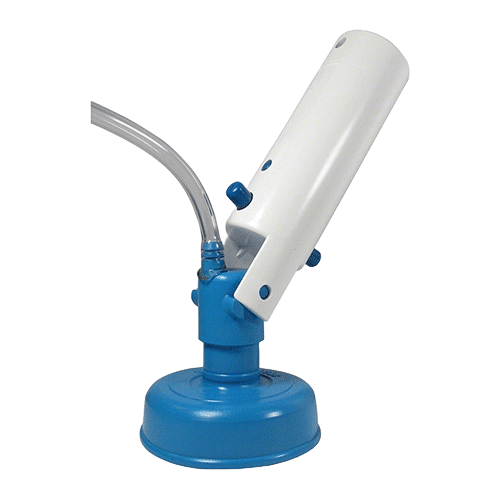
Perhaps the coolest tool ever invented (another one of Andrew Pansini’s designs), the Stain Master siphons liquid acid (muriatic acid) from a bottle on the deck, and delivers it to the pool surface, beneath a 3″ round cup. It allows you to do underwater acid washing of small areas, and is perfect for removing rust stains in pools.
You can modify a StainMaster with a Frisbee®, to give a larger surface area, for treating larger areas, but for small rust stains, it works great. I’ve even used a StainMaster on vinyl pools with success, although it’s pretty harsh on vinyl to do that.
As with the sock treatment, keep in mind that the Stain Master can produce a reverse stain, and instead of an ugly rust stain in your pool, you now have an odd looking whiter colored circle, where the StainMaster was placed. This can be reduced by actively and slowly moving the StainMaster in concentrically larger circular patterns around the rust stain.
Method #3: Vitamin C Tablets

Vitamin C tablets are made of ascorbic acid, which is a mild acid that works well for cleaning. Rubbing the surface with a large Vitamin C tablet can remove most rust stains. You can also put 20 or 30 in a heavy ziplock bag and hammer them into a powder, and sprinkle the powder over a rust stain, followed by vigorous brushing.
Stain Free is a pool stain remover that is made from ascorbic acid, already in a granular form, and very useful for treating an entire pool for metal or organic stains. Use 1 lb per 10000 gallons, with low chlorine and high pH (Adding the Ascorbic Acid will lower your pool pH level). You can also add Stain Free to a sock or pour it into a pipe for concentrated spot treatments.
Method #4: The Pipe Method

Place a 1.5 or 2 inch PVC pipe directly over the stain, with the other end of the pipe above water. Now pour in your acid – it can be a dry acid like pH down, No Mor Acid or ascorbic acid, or you can pour in liquid muriatic acid (wear safety goggles and gloves). Hold the pipe over the stain for approximately 30 seconds, and then slowly move it in a circular pattern around the stain, increasing the circle diameter with each revolution.
For rust stains that are on the wall, attach a 90 degree elbow fitting to the pipe, so that you can hold the acid against vertical surfaces.
Method #5: Plaster Repair

I mentioned at the start of the article that a persistent, reoccurring rust stain on a plaster pool is likely caused by a rebar tie wire. The rebar itself could also be the cause. The steel in a pool shell is supposed to be tucked 4-6 inches below the surface, but sometimes bars get bent, or bent improperly, and they end up within 1-2 inches of the surface. After years and years, they could become wet, and begin to bleed rust to the surface.
The only fix for this is to cut out that section of the wall, using a 4″ grinder with a diamond blade. Cut right through the rebar and then chisel out to a depth that is beneath the rebar. Coat the rebar ends with rubber sealant, and after it dries, pack the hole full of hydraulic cement. After that dries, top the hole with a plaster mix (guaranteed not to match in color), and then you can refill the pool again.
Method #6: Underwater Sanding

For plaster or pebble pools that have an isolated rust spot, that is not coming from the inside out, you can use sanding blocks or pneumatic-powered grinder/sanders, to sand down the top plaster coat. Sanding blocks are volcanic blocks, or you can use a pumice stone and just scrub the surface.
For vinyl and fiberglass pools, stones or grinding wheels are much too rough, but you can use the Stain Eraser for vinyl pools, an abrasive rubber that works like a pencil eraser, to rub off stains from vinyl and fiberglass pools. Easy to use, just attach it to your pool pole and target isolated rust spots or other pool stains.
One thing to note: Vinyl pools need to use a more delicate method, such as the Stain Eraser mentioned above, or Jack’s Magic products. Acids can remove rust stains from vinyl, but could damage the vinyl. Jack’s Magic The Blue Stuff, the Step Stuff, and the Iron Stuff all work very well for overall rust staining, or for localized rust spots on a vinyl pool.

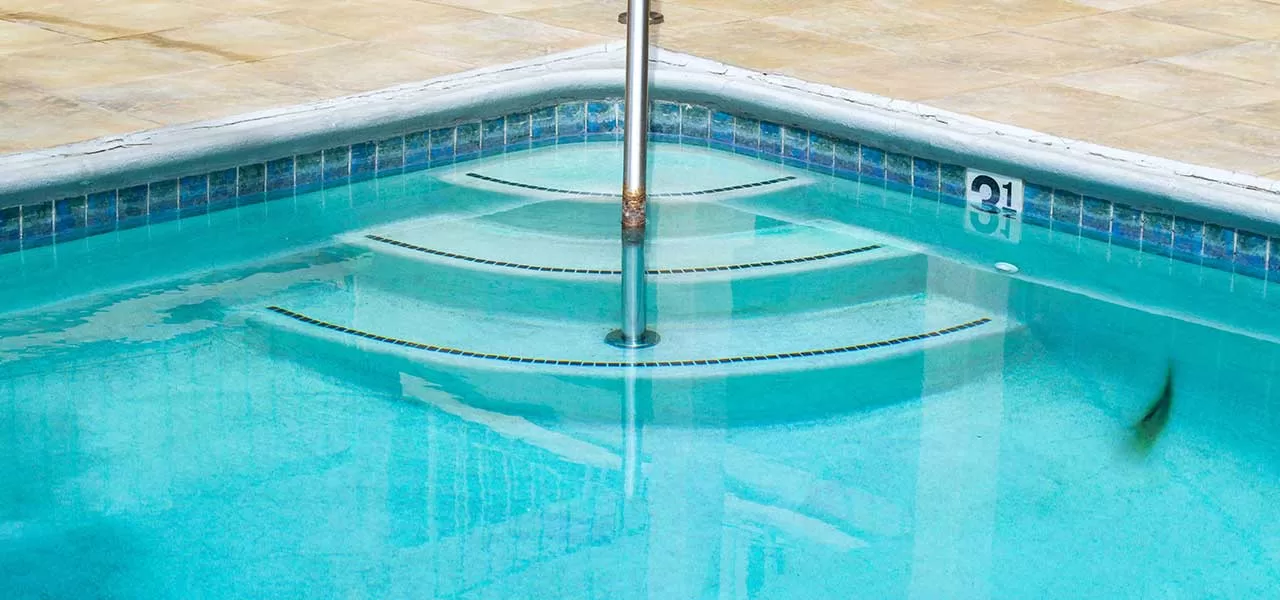

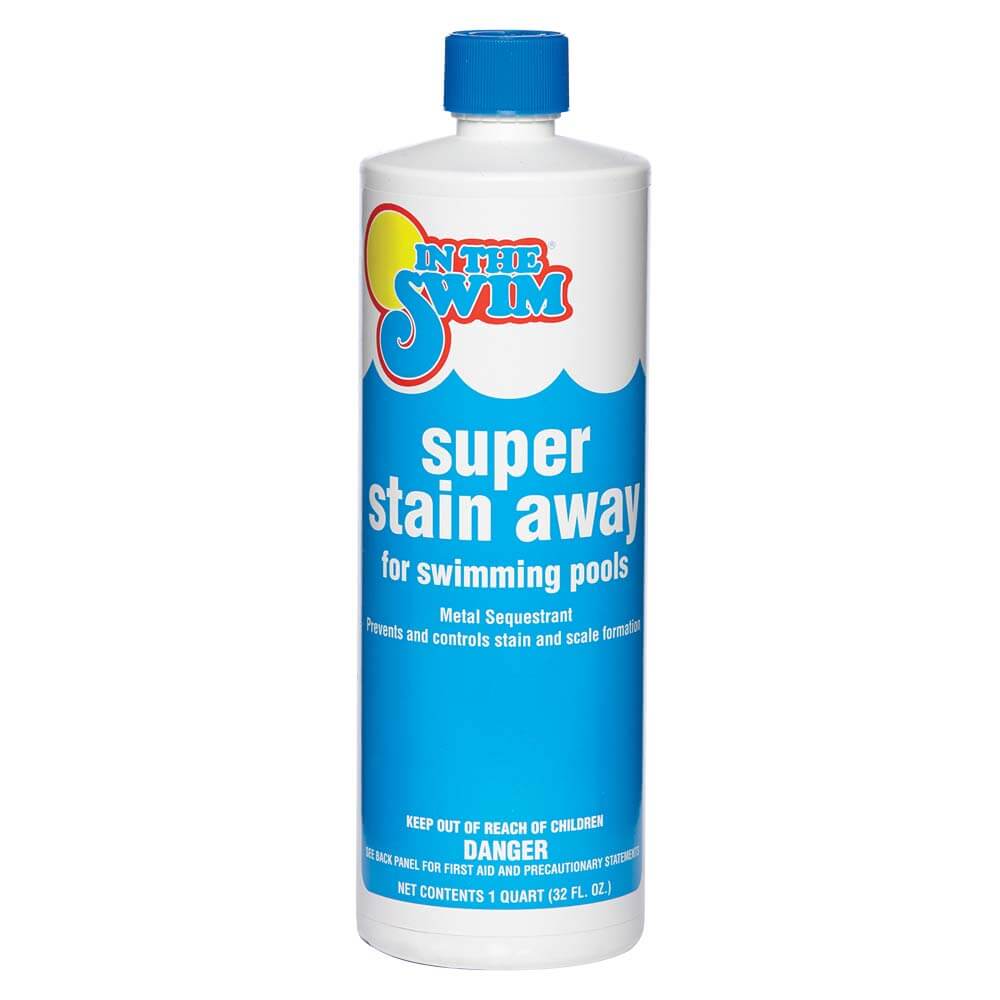
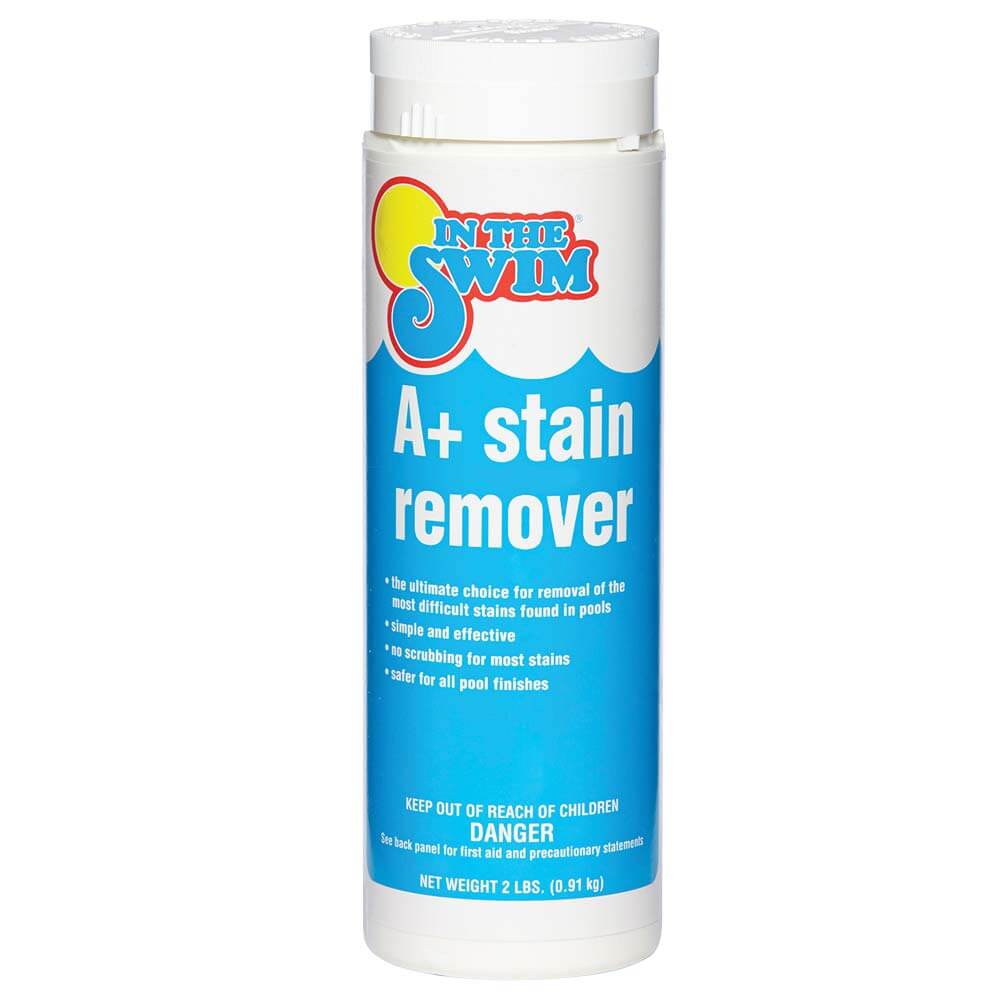
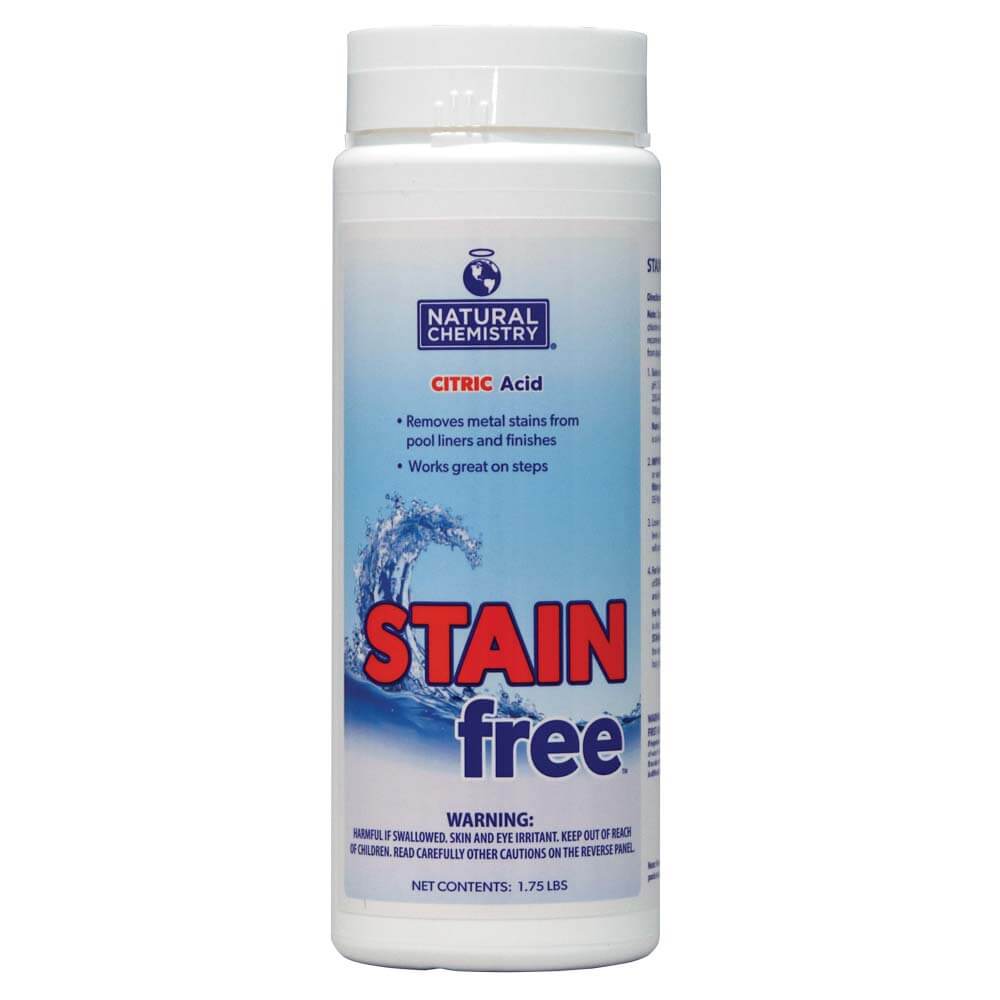
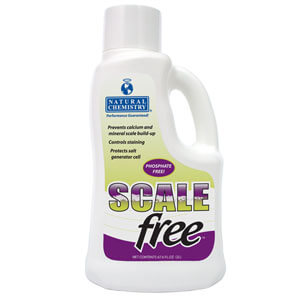


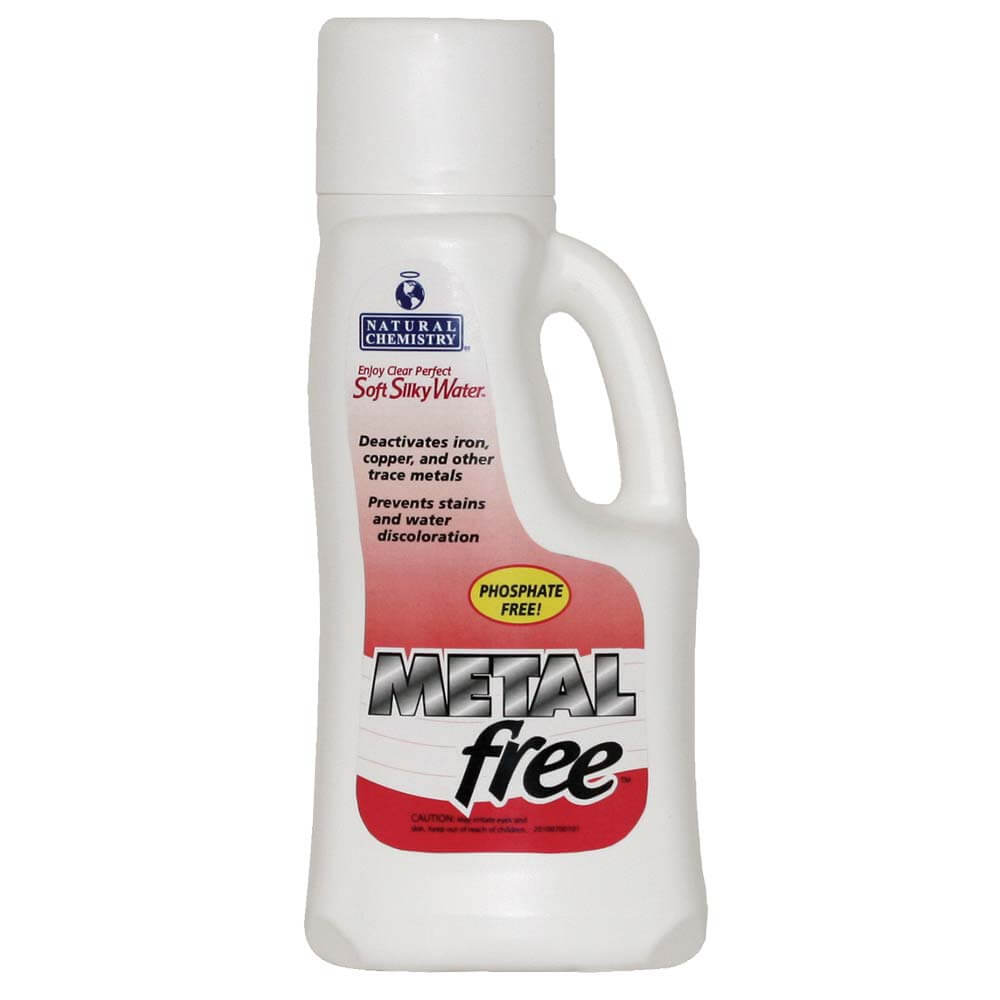

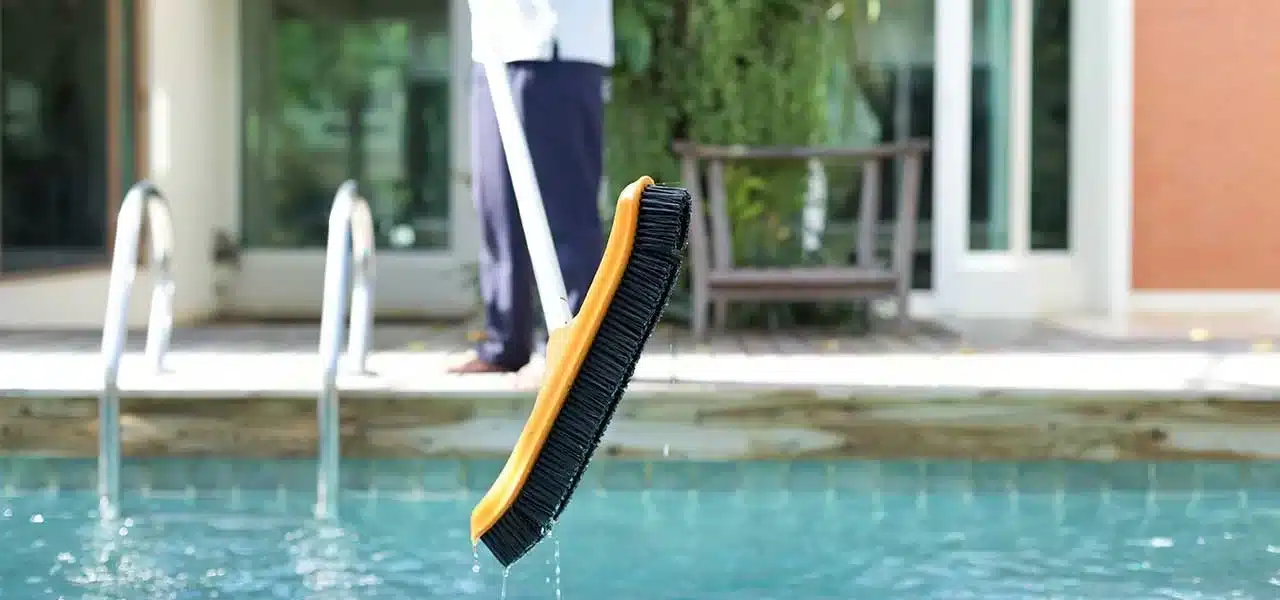
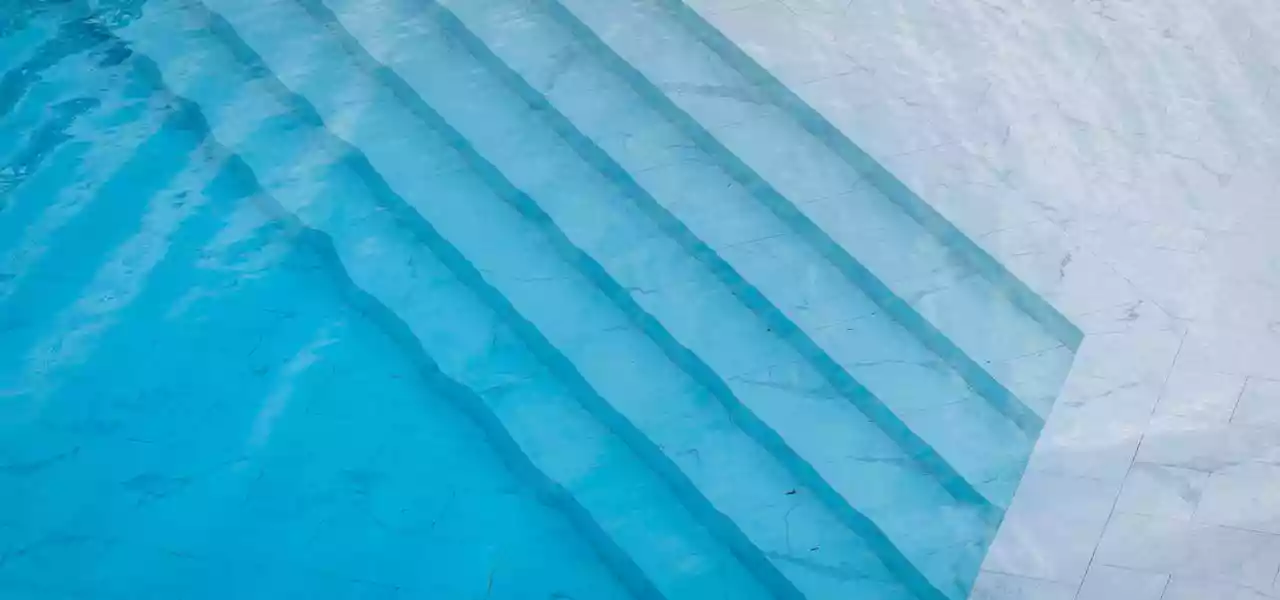
Last year we got into a problem with metal staining causing our vinyl liner to generally look faded and gross. Vitamin C cleared it right up, it looked almost brand new, but it also lowered the chlorine level to zero. In conjunction with the VitC we also used a metal out and CuLator in the skimmer. We couldn’t get the chlorine back up with just tablets because I think we were having chlorine lock from too much stablizer in the water from too many prior shock treatments. But after a couple of days, we ended up shocking because of the ensuing Algae explosion,and of course the metal stains came right back due to the shock treatment. I was reluctant to use algeacide when we used the Vitamin C/Metal Out treatment because of reading about chemical in most algaecides that just created yet a different problem (can’t remember what it was). So my questions are, 1) if we use vitamin C this year to get rid of the stains, how do we best keep the stains from resurfacing when the Chlorine level goes back up?
2) Is there a chemical in many algaecides and/or shock that creates just different problems?
3)Is liquid chlorine helpful here in any way?
We have not opened our pool yet due to some outdoor construction. But I want to get a handle on this from the get go, and try NOT to spend so much money on chemicals that don’t get us where we want to be. The staining was back last Fall when we closed the pool, but we had to get it closed because of the weather. Best guidance? Thank you so much!
Kelly, have you considered draining and refilling the pool? This will solve the cyanuric acid problem and the mineral/metal problem, and the algae problem. And water is much cheaper than chemicals. Sometimes shocking a pool can knock minerals out of solution. Use a good seqestering agent to keep minerals and metals in solution, and add weekly maintenance doses to replace the chemical as it depletes, naturally. Algaecides do not contain a problem chemical, other than copper algaecides, which can cause staining when overused. Liquid chlorine is not useful in any way that I can think of. Use tablets to raise chlorine, if you use ascorbic acid again.
What is a sequestering agent?
HI Matt, these are used to keep minerals and metals dissolved in solution, or sequestered, which means locked-up or held in place. For pools that have well water, or high levels of minerals and metals, sequestering agents, aka chelators, are used to prevent staining from minerals/metals. They deplete over time, so must be added regularly to be effective. As a group, they are called Stain & Scale chemicals, or Metal Magnet chemicals, used to prevent staining.